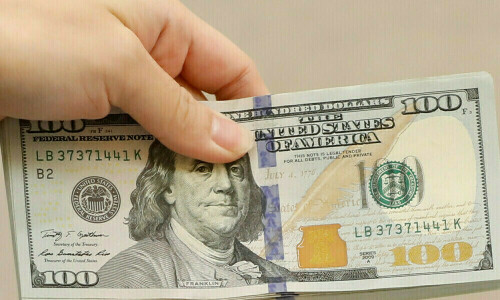Dollar Edges Higher Amid Trade Uncertainty
The dollar experienced a slight increase on Friday, offsetting earlier minor declines, as investors navigated the complexities of the U.S. economic landscape. This comes in the wake of President Donald Trump’s inconsistent statements regarding trade agreements and intervention with the Federal Reserve.
This week has seen considerable volatility in the U.S. currency’s value. It began with a sharp 1% drop against major currencies on Monday after Trump suggested he might dismiss Fed Chair Jerome Powell for insufficient interest rate cuts. However, it rebounded by 1.5% the following day when Trump stated he had no intention of replacing Powell and hinted at a possible easing of trade tensions with China.
The dollar’s recovery was hampered later in the week by the absence of concrete progress in initiating discussions with Beijing. Consequently, the dollar index, which gauges the currency’s performance against six major counterparts, is poised for a modest 0.27% gain for the week, potentially ending a four-week streak of losses.
Investors remain uncertain about the current status of U.S.-China relations. Despite Trump’s assertion that direct negotiations are ongoing, Beijing stated on Thursday that no trade talks with Washington have taken place.
In early trading on Friday, the dollar rose by 0.3% to 143.08 yen and gained 4% to reach 0.8303 Swiss francs.
The euro declined by 0.3% to $1.1355, while the pound weakened by 0.2% to $1.3314.
Washington appears to be making headway in preliminary trade discussions with South Korea and Japan.
Following the initial round of negotiations, the South Korean delegation announced on Thursday that both sides aim to finalize a trade agreement before the suspension of reciprocal tariffs concludes in July.
Japan’s Finance Minister echoed this sentiment, stating after a meeting with U.S. Treasury Secretary Scott Bessent that currency targets were not discussed.
Earlier in the month, Trump had accused Tokyo of deliberately weakening its currency to benefit its exporters.
Next week, Japan’s chief negotiator, Economy Minister Ryosei Akazawa, will engage in a second round of trade talks with Bessent.
Mizuho analysts noted that if the perception of impending tariff reductions gains traction, it could positively influence trade negotiations with other nations. This could lead to a reduction in risk-off sentiment and decreased selling of U.S. assets, potentially boosting the dollar back to 145 yen.
Conversely, the analysts added, if negotiations with Japan, a key ally, appear challenging, the situation with China could be even more difficult.
Bank of Japan’s Stance
Bank of Japan Governor Kazuo Ueda reiterated on Thursday the central bank’s dedication to raising interest rates if underlying inflation trends towards the 2% target. However, he also emphasized the need for policymakers to carefully assess the repercussions of U.S. tariffs.
Data released on Friday revealed that core consumer prices in Tokyo increased by 3.4% in April compared to the previous year, marking the second consecutive month of acceleration.
The BOJ is widely anticipated to maintain its current policy settings at its upcoming two-day meeting, concluding on May 1.
Bitcoin Update
Bitcoin saw a slight increase, trading around $94,220, nearing Wednesday’s high of $94,489.92, its highest level since March 3.



Comments (0)
No comments yet. Be the first to comment!
Leave a Comment